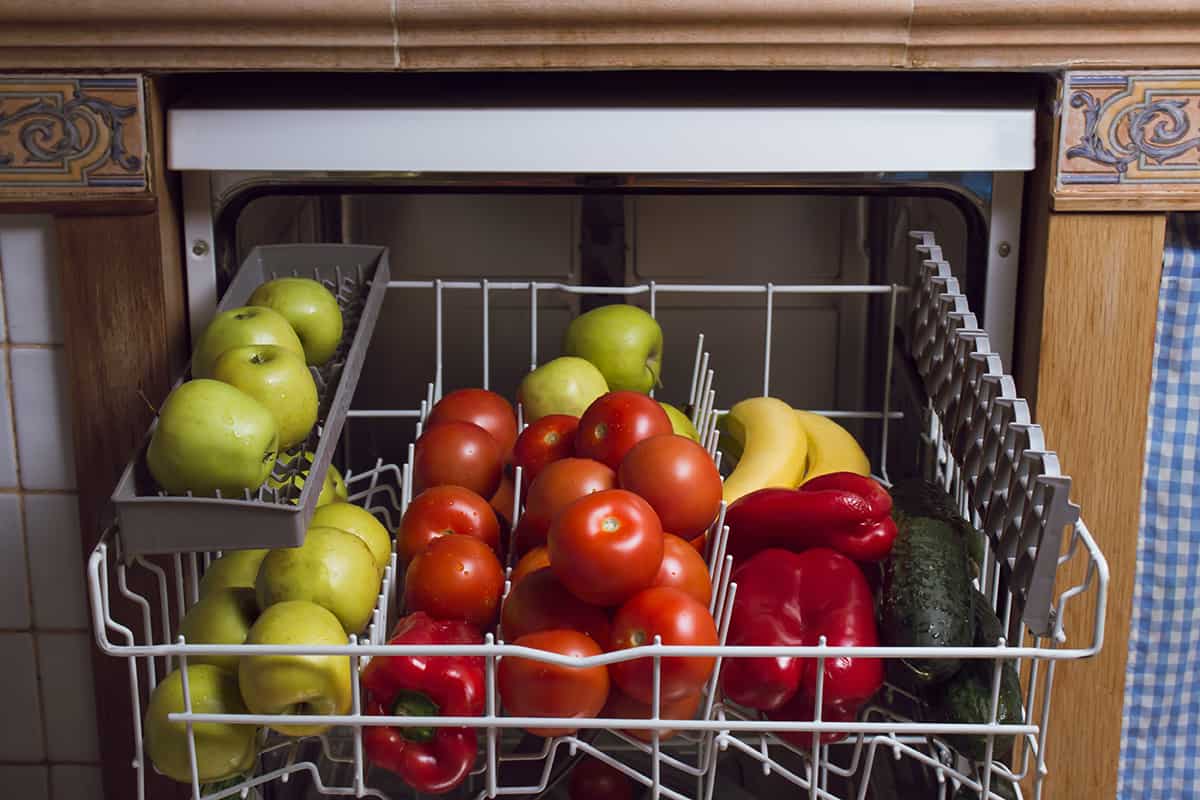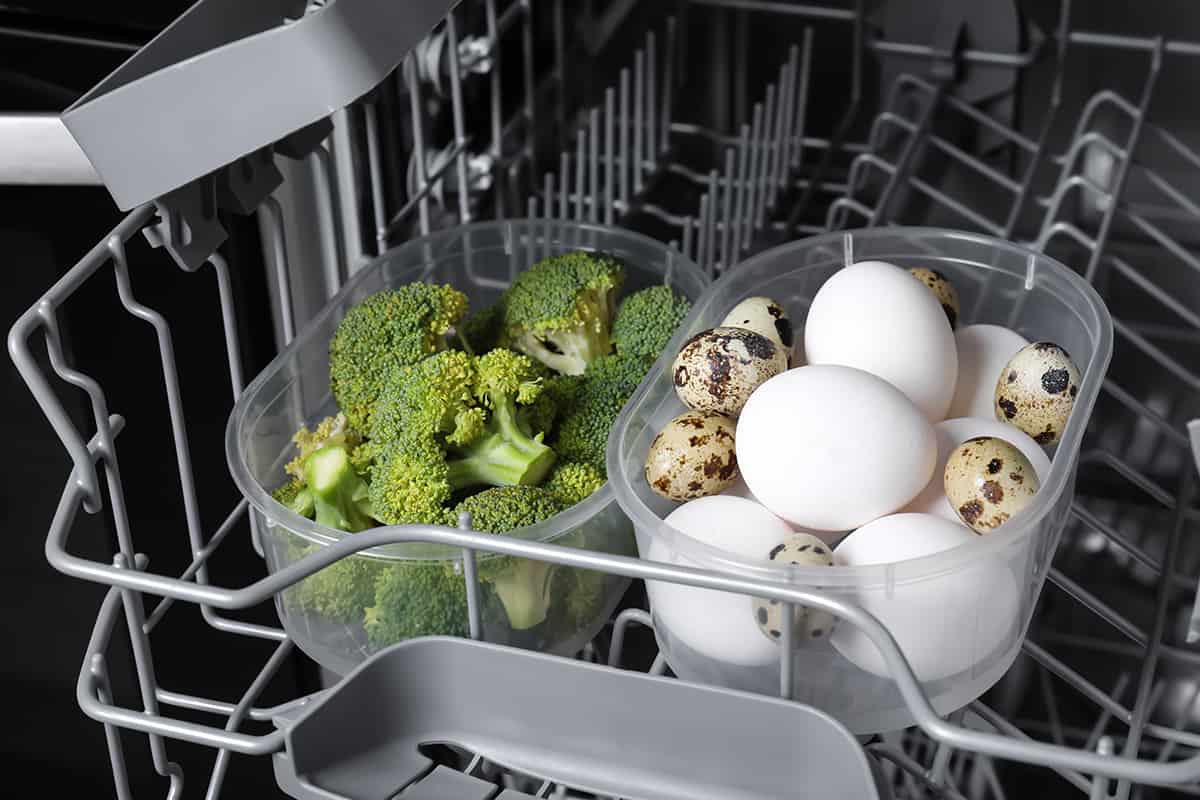In the first decade of the 21st century, culinary creativity reached new heights, with chefs and food enthusiasts pushing boundaries to redefine cooking techniques. One such innovative and perhaps strange idea was to use a dishwasher to cook meals. Yes, you read it correctly, a dishwasher, an appliance traditionally associated with cleaning, is now entering the domain of cooking.
It’s possible to cook food in a dishwasher. The heat generated during the dishwasher’s cycle can cook certain types of food. It requires careful preparation and appropriate sealing of the food to ensure safety and prevent contamination.
In this comprehensive guide, we will dive into the ins and outs of dishwasher cooking. We will also address common concerns around safety and hygiene.
The Concept Behind Dishwasher Cooking
Dishwasher cooking, as the name implies, is the process of preparing food in a dishwasher. This unconventional method has been around for a while, and it’s rooted in the basic principles of thermodynamics.
A Glimpse into its Unusual Birth
The origin of dishwasher cooking traces back to the early 1970s. From then, this method gradually caught the attention of adventurous cooks and food bloggers who shared recipes and tutorials online, effectively bringing dishwasher cooking into the public consciousness.
It’s worth noting that the technique is more suited for cooking certain types of food, specifically those that benefit from slow, low-heat cooking, such as fish, certain meats, and vegetables. However, it’s generally not recommended for foods that require high heat or browning.
The Science of Dishwasher Cooking
The scientific principle behind dishwasher cooking is quite simple: it’s essentially a form of sous-vide cooking, a culinary technique that involves cooking food at a precise temperature in a water bath for an extended period.
In a dishwasher, the heat and steam generated during the wash and dry cycles provide a steady, moist heat source that can cook food sealed in airtight containers or vacuum bags. The temperature inside a dishwasher during a heavy cycle generally ranges from 150°F to 160°F, which is within the safe cooking range for many foods. This even, low-heat cooking can result in remarkably tender and moist dishes.
A critical aspect of dishwasher cooking is to ensure the food is sealed properly before being placed in the dishwasher. Typically, the food is sealed in airtight containers or vacuum-sealed bags to prevent contact with dishwater and detergent. The sealing also traps the food’s juices, contributing to a self-basting effect that can enhance the flavor.
What Can and Can’t You Cook in a Dishwasher

Dishwasher cooking presents a novel, eco-friendly culinary method that utilizes the heat and steam of a regular dishwasher cycle. But the question is: what types of food can you cook using this method? And what should you avoid?
Dishwasher-Friendly Dishes
Dishwasher cooking is ideal for foods that require slow, low-temperature, and moist cooking methods, similar to a sous-vide technique. These include:
- Fish: Salmon, cod, or any firm-fleshed fish, cook well in a dishwasher. Seal the fish with olive oil, lemon, herbs, and seasonings in a vacuum bag, then run a normal cycle. The result is moist, tender fish infused with flavors.
- Shellfish: Shrimp, prawns, and lobsters are another great option. They steam nicely, absorbing flavors from the marinade. Always ensure they reach the recommended internal temperature.
- Chicken: Boneless chicken breasts can also be cooked in a dishwasher. Check that they reach a safe internal temperature of 165°F.
- Vegetables: Root vegetables, like potatoes and carrots, as well as asparagus and bell peppers, can be cooked effectively in a dishwasher. They steam perfectly, maintaining their nutrients and color.
- Fruits: Fruits like apples and pears can also be poached in a dishwasher. Seal them in a bag with sugar and spices, and they will emerge perfectly soft and flavorful.
- Eggs: Hard-boiled eggs can be made in a dishwasher. The heat and steam are sufficient to set the proteins in the eggs.
What Not to Cook in a Dishwasher
Despite the broad range of foods that can be cooked in a dishwasher, there are certain items that are not suitable for this method.
- Red Meat: While it is technically possible to cook red meat in a dishwasher, it’s not the best method for this type of protein. Steaks, for instance, benefit from high-heat cooking for a good sear, something a dishwasher cannot provide.
- Rice and Pasta: Grains and pasta need boiling water to cook properly, which a dishwasher can’t provide.
- Baked Goods: Cookies, bread, or any baked goods need dry heat, so they can’t be cooked in a dishwasher.
- Raw Legumes: Beans and other legumes require a long cooking time at high temperatures, which can’t be achieved in a dishwasher.
Ensuring Health and Hygiene in Dishwasher Cooking
The potential for cross-contamination and the assurance of cooking food to a safe temperature are both important considerations.
Food Safety Measures When Cooking in a Dishwasher
Here are some steps to maintain food safety while cooking in a dishwasher:
- Sealing: Proper sealing of food is crucial to prevent the dishwater and detergent from contaminating your meal. Use high-quality, heat-resistant bags specifically designed for cooking, such as vacuum-seal bags. Alternatively, use airtight glass jars for cooking certain food items. Ensure there are no leaks before placing them in the dishwasher.
- Temperature: As with any cooking method, it’s crucial that food reaches a safe internal temperature to kill off harmful bacteria. A food thermometer is your best tool for this. For example, poultry should reach an internal temperature of at least 165°F, and fish should reach at least 145°F.
- Detergents: Use only food-safe dishwasher detergents, and avoid those with high bleach content or strong scents.
- Cycles: Use a full cycle for cooking, including hot water and heated drying, to ensure the food gets cooked thoroughly.
- Separation: It’s advisable not to wash dirty dishes at the same time as cooking food in the dishwasher. Although the food is sealed, there’s a risk of puncturing the cooking bag with sharp utensils, leading to potential contamination.
Preventing Cross-Contamination
When it comes to preventing cross-contamination, the key is to separate the act of cleaning dishes from cooking food. Here are a few tips:
- Dedicated Dishwasher Use: If possible, dedicate a cycle of your dishwasher entirely for cooking, separate from your dish cleaning cycle.
- Check for Residue: Ensure your dishwasher is clean, with no leftover food particles or residues, before you start cooking.
- Space Management: Do not overcrowd your dishwasher with too many food packets, and keep sharp items away that might puncture the cooking bags.
- Double Sealing: Consider double-sealing your food for extra security.
- Post-Cooking Cleaning: After cooking, run a cleaning cycle before loading the dishwasher with dirty dishes.
FAQs
1. How to Properly Seal Food for Dishwasher Cooking?
Sealing food keeps food from coming into contact with dishwater and detergent, and it traps the food’s natural juices for flavor. Here are the steps to seal food properly:
- Choose a high-quality, heat-resistant bag, preferably vacuum-seal bags designed for cooking, or use airtight glass jars.
- Place your food inside, adding marinades or spices as desired. For bags, leave some space at the top to allow for expansion.
- If using a bag, press out as much air as possible before sealing it. Vacuum-seal bags are best as they remove the most air, helping to ensure even cooking.
- Double-check the seal, making sure it’s secure. If you’re not sure, you can double-seal for extra security.
- Before placing the sealed bag or jar in the dishwasher, inspect it thoroughly for leaks.
2. Does Dishwasher Cooking Save Energy Compared to Traditional Cooking?
Yes, dishwasher cooking can indeed save energy. It’s essentially ‘piggybacking’ on an activity that was going to happen anyway – the dishwasher running its cycle. By adding food to be cooked during this cycle, you’re making efficient use of the energy already being consumed.






